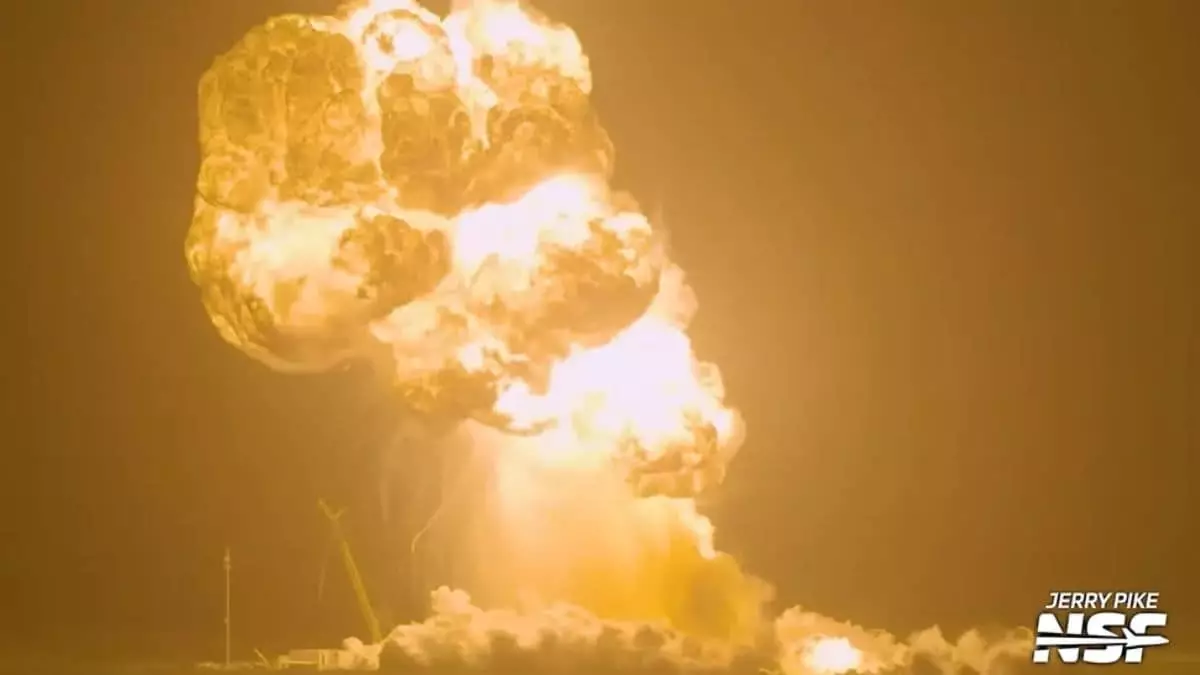Late Wednesday night, an explosion erupted at SpaceX’s Starbase facility in Texas during what was meant to be a routine static fire test of the Starship rocket. At approximately 11:00 PM local time, the blast resulted in a colossal fireball, capturing the attention of the late-night skies. Fortunately, preliminary reports indicate that no personnel were harmed; however, the incident starkly highlights the potentially precarious nature of such ambitious aerospace endeavors. Immediately following the explosion, a security tether was implemented, ensuring that all staff were safely accounted for during this crisis—underscoring the company’s protocols in place to safeguard its personnel amidst chaos.
A Flawed Vision of Innovation
Being at the helm of a revolutionary aerospace project, CEO Elon Musk has consistently touted Starship as a beacon of possibility—a vessel aimed at executing humanity’s dreams of colonizing Mars. However, each setback, including this explosion, questions the viability of such grand aspirations. The cause of the abrupt explosion has been attributed to “a sudden energetic event” tied to a potential failure of a Composite Overwrapped Pressure Vessel (COPV) located within the rocket’s nosecone. Musk’s dismissive framing of the explosion as merely a “scratch” lacks the gravity required in light of such catastrophic failure and raises concerns about the company’s risk tolerance.
Ignoring Environmental Concerns
While SpaceX continues to push the envelope with its aggressive testing agenda—dubbed “test aggressively and iterate quickly”—the company is also facing increased scrutiny over its environmental practices. Just weeks prior, the Federal Aviation Administration gave the green light for SpaceX to conduct up to 25 launches per year despite voiced concerns from conservationists regarding the environmental impact of these tests. This cavalier dismissal of legitimate environmental issues paints a disappointing picture of a company more fixated on rapid development than sustainable practices, endangering not just technological advancement but also the planet’s well-being.
Backing from Government Agencies
On the other hand, it’s worth noting that government support remains unwavering. NASA continues to endorse SpaceX as it utilizes the Dragon spacecraft for astronaut transport, upholding a tenuous partnership that fuels both public and private interests in space exploration. Despite recurring failures, the federal agency appears committed to the long-term plans surrounding missions involving Starship. Such backing suggests a belief in the potential of what space exploration can mean for humanity, but at what cost?
The Future of Space Exploration at Stake
The Starship incident is not simply a momentary setback; it represents a confluence of risks and realities that come with pushing the boundaries of technology. As we gaze towards the brilliantly intimidating prospect of moving beyond Earth, we must seriously contemplate: Is this reckless fervor for innovation worth the potential consequences? In an ever-evolving world, it may very well be essential to balance aspiration with responsibility, lest our ambition leads us down a path of destruction rather than discovery.

